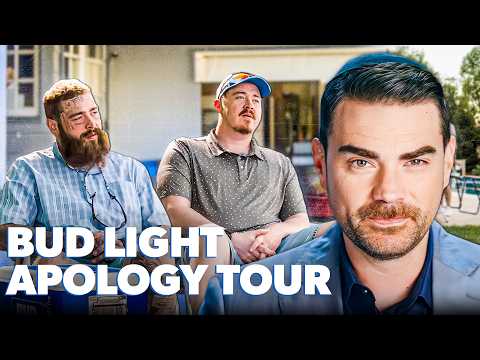In recent weeks, Bud Light has been navigating a stormy sea of public relations after a marketing decision that many deem ill-fated. The company made headlines two years ago for featuring a transgender influencer on its product, and the backlash was swift and severe. It seemed like a strategic misstep that alienated traditional consumers, leading to significant declines in sales. Now, Bud Light is attempting to claw its way back to relevance with a new advertising strategy that leans heavily into masculinity and traditional American values.
The brand’s latest campaign features beloved figures from pop culture, like Shane Gillis and Post Malone, engaging in activities that epitomize an American “manly” lifestyle—think barbecues, parties, and outdoor adventures. This pivot suggests a clear acknowledgment of their earlier miscalculation. After all, when your previous strategy involves endorsing progressive ideologies, the quickest way to recover might just be to embrace the sturdy, familiar identity that appeals to the average guy. Many could argue that this shift exemplifies a broader trend in corporate America: steer into the woke narrative at your peril.
Bud Light’s changes serve as a cautionary tale for other brands that have taken similar risks without considering the potential fallout. From large companies to mom-and-pop establishments, the lesson is clear: consumers have preferences, and ignoring them in the name of social justice can prove detrimental. So, while Bud Light scrambles to regain lost ground, many brands are now reconsidering their own marketing strategies, balancing the need for social responsibility with the necessity of appealing to a diverse consumer base that leans toward conservatism.
In stark contrast, other major brands, like Nike, have stuck to their guns with marketing that appears out of touch. Their latest ad campaign still portrays the notion that women are systematically oppressed, neglecting to address how many women today feel empowered and capable. The ad may feature notable female athletes breaking ceilings, but younger audiences can see right through these manufactured narratives. It’s reminiscent of that tired classroom saying: “You can’t win, so do your best to win.” The absurdity of such messaging prompts many in the younger generation to roll their eyes rather than rally behind a cause.
Furthermore, the NFL’s attempts to woo female viewers with ads that feature girl power in football are misguided at best. The notion of women competing at a high level in a sport predominantly played by men does not resonate as intended. Women enjoy watching the NFL for the culture of the game, not necessarily to see women tackle men on the field—especially given the reality of physical differences that exist. These ad campaigns miss the mark by failing to recognize that sports, much like marketing, thrive on authenticity.
In conclusion, Bud Light is not alone in facing the repercussions of marketing decisions that stray too far left, but they are perhaps the most visible example of a brand striving to regain traditional values as they work to mend the proverbial bridge they burned. A careful understanding of their target demographic, along with avoiding progressive overreach, might just hold the key to their redemption story. For companies paying attention, it’s clear: when it comes to brand identity, respect for your audience might just be the most valuable currency of all.



